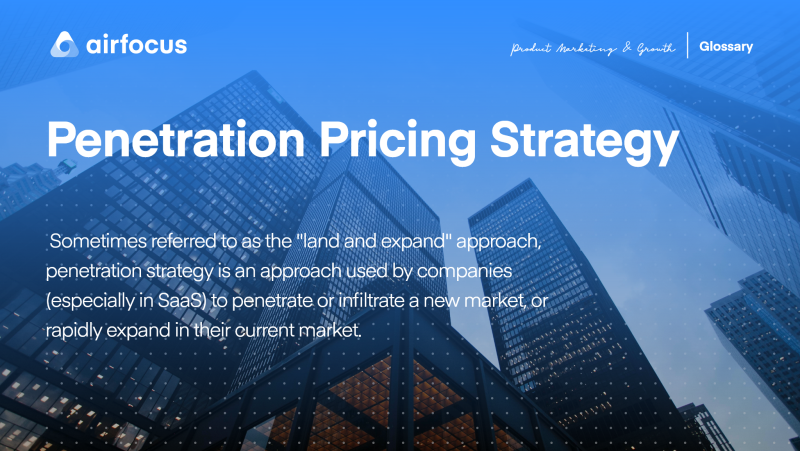Penetration Pricing Strategy
What is a Penetration Pricing Strategy
Definition of a Penetration Pricing Strategy
Sometimes referred to as the "land and expand" approach, penetration pricing strategy is an approach used by companies (especially in SaaS) to penetrate or infiltrate a new market, or rapidly expand in their current market.
This means setting a very low initial price on a product in the short-term, with the goal of compensating in the longer-term by upselling or cross-selling the new customers they gain.
Sometimes, companies with a new offering may use penetration pricing to garner a large market share of customers before any obvious competitors come into the arena. Then, they may hike their prices once they’ve established the market penetration they are after.
Or, they may lower prices in the short term to steal customers from competitors if the demand for the product is elastic.
Advantages and pitfalls of a penetration pricing strategy
Penetration pricing has a few advantages, but there are some important potential pitfalls to consider as well.
The first advantage of penetration pricing is attracting a quick influx of new customers who see the value of the product, and feel they’re getting a good deal. The hope is that these customers will grow loyal to the product or brand, and buy-in to any upsells or cross-selling.
However, this is not a guarantee, and sometimes customers could remain a financial drain. Therefore, penetration pricing is not recommended as a long-term pricing strategy for any business.
Penetration pricing also allows companies to gain a large majority of market share before their competitors can react. However, this too can backfire.
If a company uses penetration pricing, customers may begin to expect permanently low prices for that product or service. When prices increase, those customers may become dissatisfied and stop purchasing the product or service, or find another lower price competitor.
Factors to consider with penetration pricing
Before considering a penetration pricing strategy, companies should weigh the importance of brand identity and brand loyalty with their customers.
If brand identity is very important to your company’s success, penetration pricing may not be a good fit, as customers may perceive the brand as ‘cheap’ or low-quality.
If brand loyalty is strong with your customers, you may have higher success with penetration pricing, as your customers — once in the proverbial door — will continue to buy from you whether you upsell or raise your pricing (ultimately, the end goal of penetration pricing).

General FAQ

Glossary categories
Prioritize with confidence

Experience the new way of doing product management








